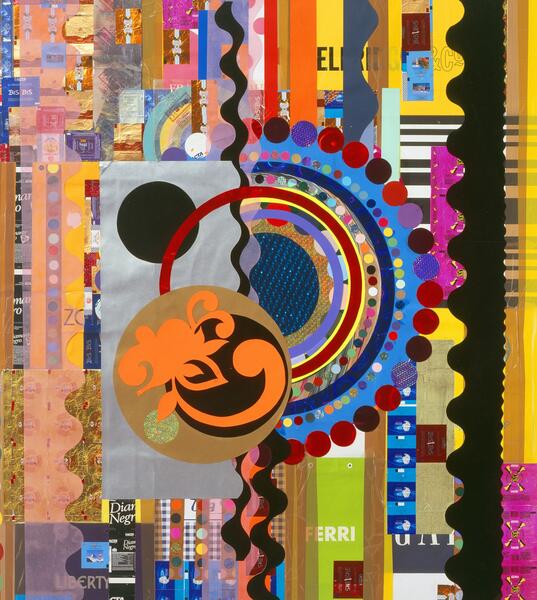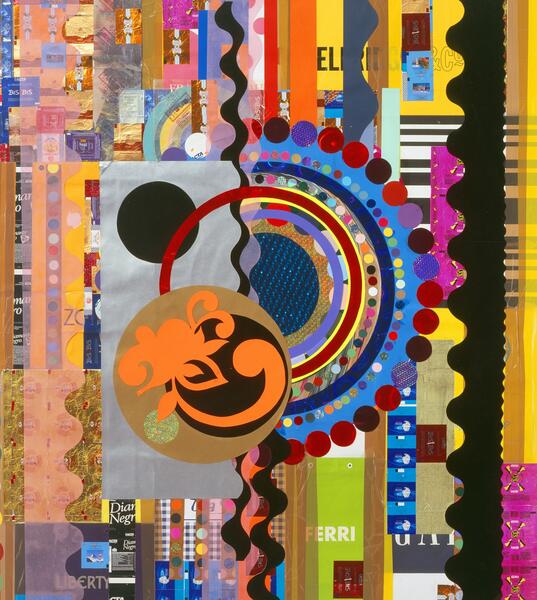Fondation Beyeler Announces the Exhibition Beatriz Milhazes
The Brazilian Beatriz Milhazes (b. 1960, Rio de Janeiro) is one of the most highly regarded women artists on the international art scene. The basic motifs in her oeuvre are drawn from the abundance of the tropical environment and the history and culture of her native country. This is reflected in vivid compositions based on arabesques, floral and abstract ornamentation, geometric shapes, and rhythmical patterns in brilliant, magnificent colors. After major exhibitions including those at the Museum of Modern Art, New York, the Fondation Cartier, Paris, the Museum of Contemporary Art, Tokyo, and the Pinacoteca, São Paulo, the Fondation Beyeler now devotes the first exhibition in Switzerland to Milhazes.

The exhibition, mounted on the museum’s lower floor, comprises four new, monumental paintings, a selection of the artist’s compelling collages, and a mobile. The exhibition will take place from January 29th to April 15th, 2011. The paintings, done expressly for the show over the past two years, are devoted to the subject of the four seasons. Milhazes’s unique painting technique is derived from decalcomania. She applies paint to transparent plastic foil and, when the paint has dried, mounts the foil on canvas. The foil is then pulled off, often taking up paint patches with it, leaving the application adhering as a smooth layer to the canvas. Used again and again, the pieces of foil retain traces which may then reappear in the same or other works. Each painting is thus marked by the flux of time, like a palimpsest.
The selection of the subject of the four seasons was the first time Milhazes determined the subject of works in advance of the painting process. Usually she selects a title after the works are finished, from a list of previously noted words and phrases, without any necessary objective connection between title and image. The collage titles are frequently derived from the materials employed, for instance foil candy wrappers. Colored, monochrome, patterned, glossy or fluorescent papers are further components of her collages.
In 2007, Milhazes designed stage sets for her sister Marcia’s dance group (Marcia Milhazes Dance company). One of the mobiles from the sets will be expanded by a samba school in Rio de Janeiro for the Fondation Beyeler exhibition. The materials comprise simple decorative elements of the kind used to adorn floats in the Carnival parade.
Though painting forms the focus of Milhazes’s artistic activity, she also employs other media such as collage and printmaking, produces artist’s books, and designs textiles, building facades, stage sets, and interiors, such as one at the Tate Modern, London. At Art Basel Miami Beach in 2010, the Fondation Beyeler exhibited a spectacular floor work, a first-ever project in which the entire area of the stand was covered with ceramic tiles designed by the artist.
The exhibition project is curated by Michiko Kono, assistant curator at the Fondation Beyeler.
Among her solo exhibitions there are: Beatriz Milhazes, Ikon Gallery, Birmingham, England, 2001; Mares do Sul, Centro Cultural Banco do Brasil,CCBB, Rio de Janeiro, Brasil, 2002 ; Coisa Linda, Artist’s Book Project, The Museum of Modern Art, New York, 2002; Beatriz Milhazes, Domaine de Kerguéhennec, centre d’art contemporain, Bignan, France, 2003; Beatriz Milhazes: Pintura, Colagem, Estação Pinacoteca, São Paulo, 2008; Beatriz Milhazes, Fondation Cartier pour l’art contemporain, Paris, 2009
www.fondationbeyeler.ch. Fondation Beyeler, Beyeler Museum AG, Baselstrasse 77, CH-4125 Riehen, Switzerland






